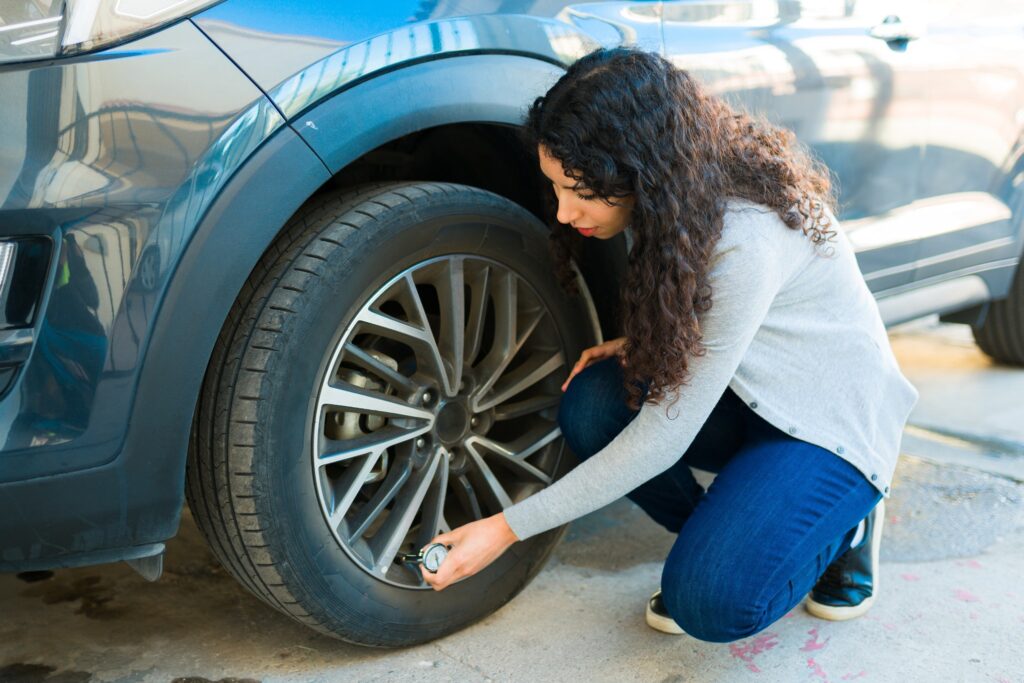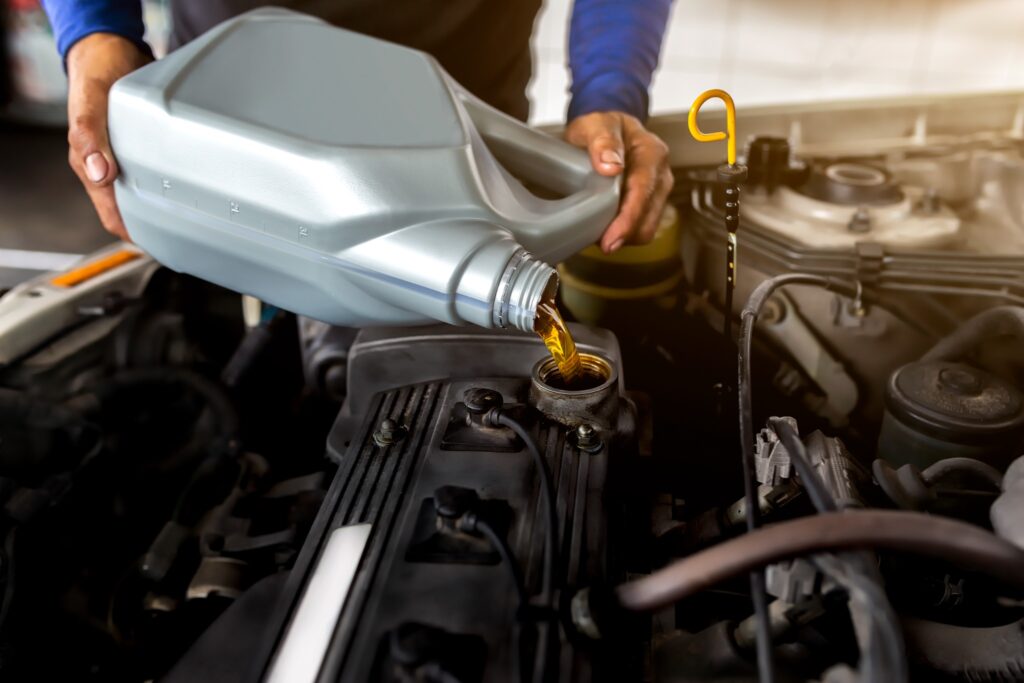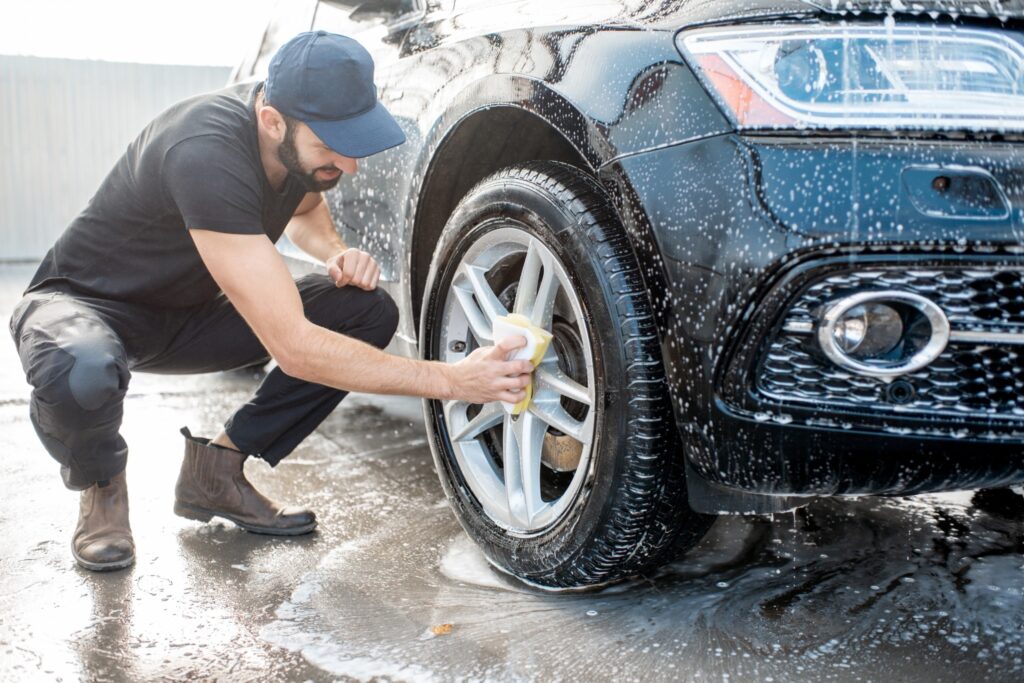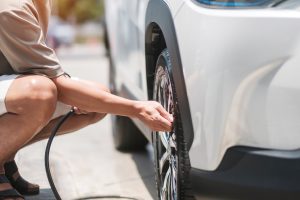Spring Car Maintenance Checklist: Essential Tips for a Smooth Ride

Spring Car Maintenance Checklist: Essential Tips for a Smooth Ride
Spring is the perfect time to get your car ready for warmer weather. Winter conditions can take a toll on your vehicle, so a spring maintenance check helps ensure a smooth, safe ride while preventing costly repairs. Kelley Blue Book recommends keeping a detailed service record and scheduling a routine checkup every six months. Here’s what you can do:

1. Check Your Tire Pressure
Winter weather can cause tire pressure fluctuations and excessive tread wear, making driving conditions unsafe. Before hitting the road this spring:
Adjust tire pressure to the manufacturer’s recommended PSI to maintain stability and fuel efficiency.
Check tread depth using the penny test—if Lincoln’s head is visible, it’s time to replace your tires.
Rotate tires to promote even wear and extend their lifespan, ensuring better grip and performance.
2. Change Oil & Filters
Oil lubricates the engine, preventing overheating and damage to vital components. Seasonal changes are an ideal time for an oil change.
Change the oil and oil filter every 3,000–5,000 miles or per your vehicle’s manual to keep your engine running smoothly.
Replace air filters to improve airflow, enhance fuel efficiency, and prevent engine strain.
Check and replace the cabin air filter, which helps maintain clean air inside the vehicle.


2. Change Oil & Filters
Oil lubricates the engine, preventing overheating and damage to vital components. Seasonal changes are an ideal time for an oil change.
Change the oil and oil filter every 3,000–5,000 miles or per your vehicle’s manual to keep your engine running smoothly.
Replace air filters to improve airflow, enhance fuel efficiency, and prevent engine strain.
Check and replace the cabin air filter, which helps maintain clean air inside the vehicle.

3. Inspect Wiper Blades & Fluids
Spring showers can reduce visibility, making properly functioning wipers and topped-off fluids essential.
Replace worn-out wiper blades if they leave streaks or squeak against the windshield.
Refill windshield washer fluid to ensure a clear view in rainy conditions.
Check coolant, brake fluid, and transmission fluid levels, and top them off as needed to maintain performance.
4. Inspect Your Breaks
Brakes are crucial for safety, and winter conditions can accelerate wear. Be sure to:
Listen for squeaks, grinding, or clicking noises, which could indicate worn brake pads.
Check for vibrations or delayed braking response, which may suggest rotor warping or uneven wear.
Schedule a brake inspection to ensure pads, rotors, and fluid levels are in optimal condition.


4. Inspect Your Breaks
Brakes are crucial for safety, and winter conditions can accelerate wear. Be sure to:
Listen for squeaks, grinding, or clicking noises, which could indicate worn brake pads.
Check for vibrations or delayed braking response, which may suggest rotor warping or uneven wear.
Schedule a brake inspection to ensure pads, rotors, and fluid levels are in optimal condition.

5. Test Your Battery
Cold weather weakens battery power, increasing the likelihood of unexpected failures. To keep your car starting reliably:
Test battery voltage at a local auto shop—many offer free battery checks.
Inspect battery terminals for corrosion and clean them with a wire brush if needed.
If your battery is over three years old, consider replacing it to avoid breakdowns.
6. Clean & Protect Your Car
Spring is the perfect time to wash away winter grime that can cause rust and deterioration.
Wash your car thoroughly, including the undercarriage, to remove salt buildup that leads to corrosion.
Apply wax to protect your vehicle’s paint from UV rays, rain, and debris.
Vacuum and wipe down the interior, removing accumulated dust and moisture to prevent mold growth.


6. Clean & Protect Your Car
Spring is the perfect time to wash away winter grime that can cause rust and deterioration.
Wash your car thoroughly, including the undercarriage, to remove salt buildup that leads to corrosion.
Apply wax to protect your vehicle’s paint from UV rays, rain, and debris.
Vacuum and wipe down the interior, removing accumulated dust and moisture to prevent mold growth.
Why Spring Car Maintenance Matters
Seasonal maintenance keeps your car safe, efficient, and reliable, reducing the risk of costly repairs. A well-maintained car enhances fuel efficiency, improves driving safety, and prolongs the life of essential components. By following this spring checklist, your vehicle will be road-trip ready for the season ahead.
Interested in other ways to keep you car running at peak performance?
Check out our other helpful blog posts:
Spring Car Maintenance Checklist: Essential Tips for a Smooth Ride Read More »







 Check your tires: Cold weather can be tough on tires, so make sure they are properly inflated and have enough tread left. Consider getting a tire rotation to ensure even wear and extend the life of your tires.
Check your tires: Cold weather can be tough on tires, so make sure they are properly inflated and have enough tread left. Consider getting a tire rotation to ensure even wear and extend the life of your tires.